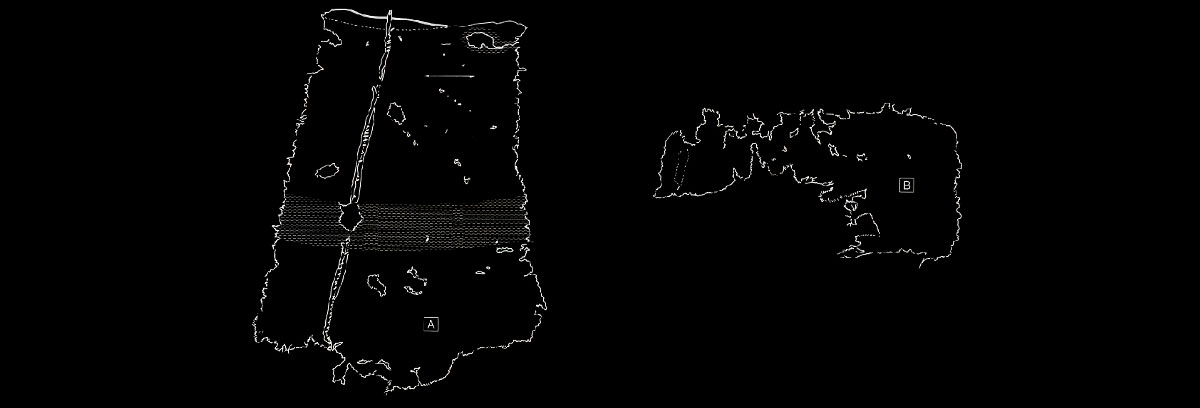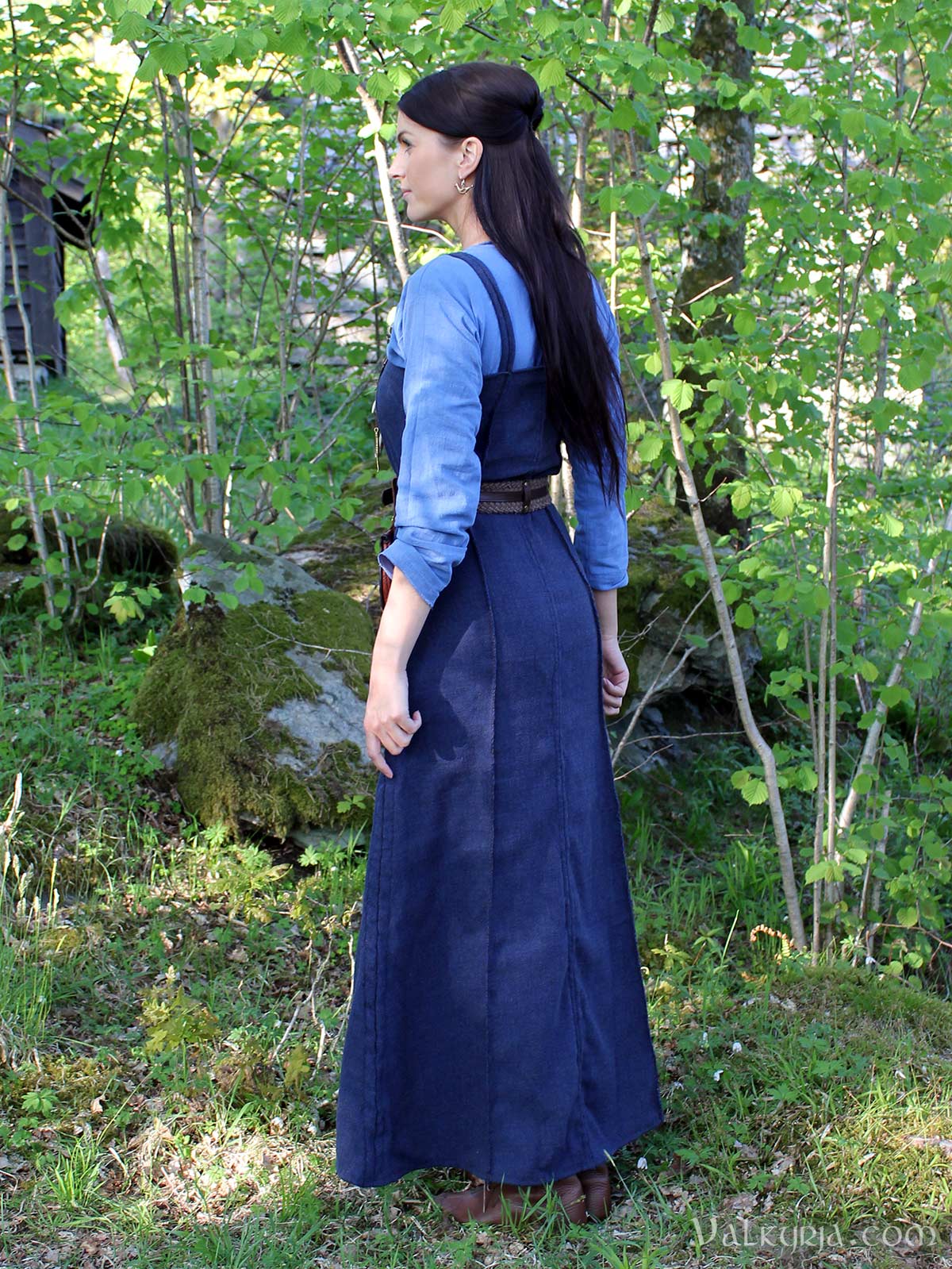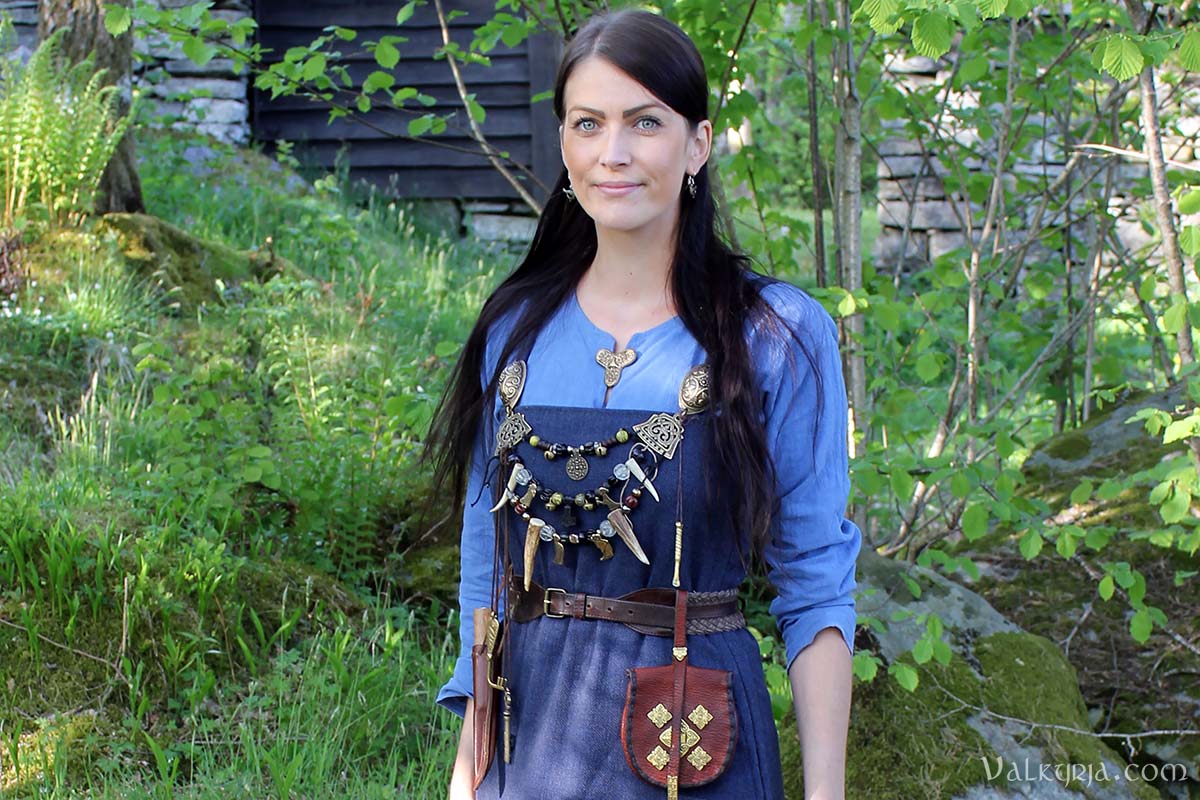| |
|
| Another aprondress (and shoes!) 🍃 |
19 |
I've made a new addition to my Viking wardrobe, a hand-stitched reconstruction of the Heiðabý (Haithabu) aprondress.
While most of my Viking wardrobe consists of greens and browns, this time I went for blue, the color of our group Folkvangr.

The fabric is a wonderful diamond twill wool, weaved in blue/dark grey yarn. According to interpretations of the original fragments, it has a tailored cut fitted to my figure and widened from the waist down, and consists of three panels (one in the front and two joining at the back), with round shoulder loops for attaching the dress at the front.

The original fragments of the Heiðabýr (Haithabu) aprondress are dated to the 10th century, and were dyed in brown using walnut. The largest piece (H14A) is approx. 30 cm long and believed to be from the upper part of the backside of the dress, and shows remains of a decorative dart running down the side of the back, decorated with a 6-strand braid in red and yellow. Traces of the dart are also visible on the smaller fragment (H14B) which is believed to have been positioned a bit further down on the back. Also, the felted area seen on the larger fragment indicates that the dress was worn with a belt.

(Illustrations by Inga Hägg, 1984)
My reconstruction is embellished with two decorative darts running down the back, decorated with 6-strand braids in grey and blue. While it is not known how far down they extended on the original dress, I chose to make mine run from the back and all the way down the hem of the skirt.

The dress is sewn with spælsau wool thread, which I waxed beforehand for extra strength. The panels are joined together using backstitch after which the seams are folded to each side and overcast, creating three parallel lines of seam.

The blue 100% linen underdress I'm wearing underneath was sponsored by Klesarven, and has square underarm gussets, side gores, and a keyhole neckline. The dress is based on fragments found in Birka, and the neckline is consistent with fragments found in grave 60A, which was also dyed in blue.

I've also recently bought these new Oseberg leather boots, as my old hand-sewn ones have been falling apart after four years of good use. I had made a habit of leaving them outside of Lars Christians tent (our groups shoemaker) in the night during Viking markets, and waking up with all the holes being magically mended... ^^ But I had started feeling sorry for the poor guy, who simply couldn't stand to look at my old moribund shoes without taking pity on them!

The new ones are also based on the boots from the Oseberg-ship, but have a firmer sole made of hardened leather.
I'm happy to have managed to get this in place in due time for my first Viking market of the summer (tradition dictates that I sit up all night for a few days before the season starts making last minute garments). But I like the feeling! Ready for this summers' markets, and to spend time with the best of friends—living, sleeping, cooking and eating under the open summer sky... ♥
References and further reading:
- Hilde Thunen's website provides a wealth of information if you would like to read more about the evidence and interpretations for recreations of the underdress, or the aprondress from Haithabu harbor.
- Kristine Risberg's website includes a very good step by step tutorial describing her reconstruction of the Heiðabý aprondress.
- Charlotte Blindheim's article describes and discusses the shoe findings from the Oseberg ship, pp. 71-86 (English abstract on page 85).
Music: Ivar Bjørnson & Einar Selvik - Ni Mødre av Sol
# Comments
|


|
|









